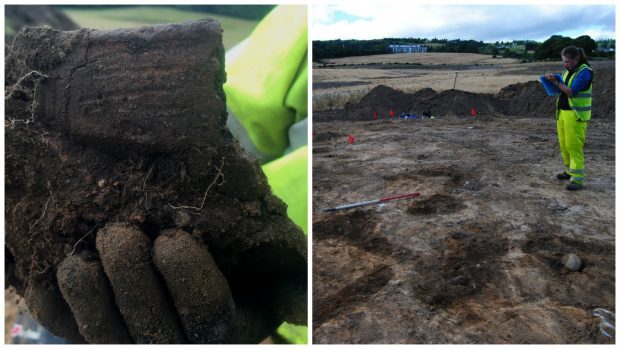As the fieldwork underway along the West Link route in Inverness draws to a close, a prehistoric arrowhead is just one of the intriguing artefacts of archaeological interest that have been uncovered.
As well as the arrowhead, pieces of pottery, lithics, clay pipe stems, iron slag and other features including a burnt mound, a kiln, an upstanding kerb cairn and what could be the remains of a roundhouse have all been identified.
There has been almost no modern archaeological excavation in this part of Inverness, despite antiquarian accounts of significant prehistoric findspots and burials.
Therefore the results, from this work, have the potential to improve major gaps in understanding of this part of the archaeological landscape of the Inverness area.
Of particular interest are the features identified in areas where none were recorded before and where archaeologists may have expected any remains to have been destroyed by previous development and landscaping work such as under the rugby pitches.
Due to the presence of archaeological sites of possible medieval and prehistoric origin the watching brief along the route is on-going whilst work continues.
The Highland Council’s archaeologist Kirsty Cameron said: “Results from an Archaeological point of view have certainly extended our knowledge of this area of Inverness. Before this work was carried out we didn’t have any recorded remains from this whole area. The analysis that will be carried out by specialists will give us better dating evidence and wouldn’t it be great if the results could be reported at next year’s Highland Archaeology Festival Conference?”
